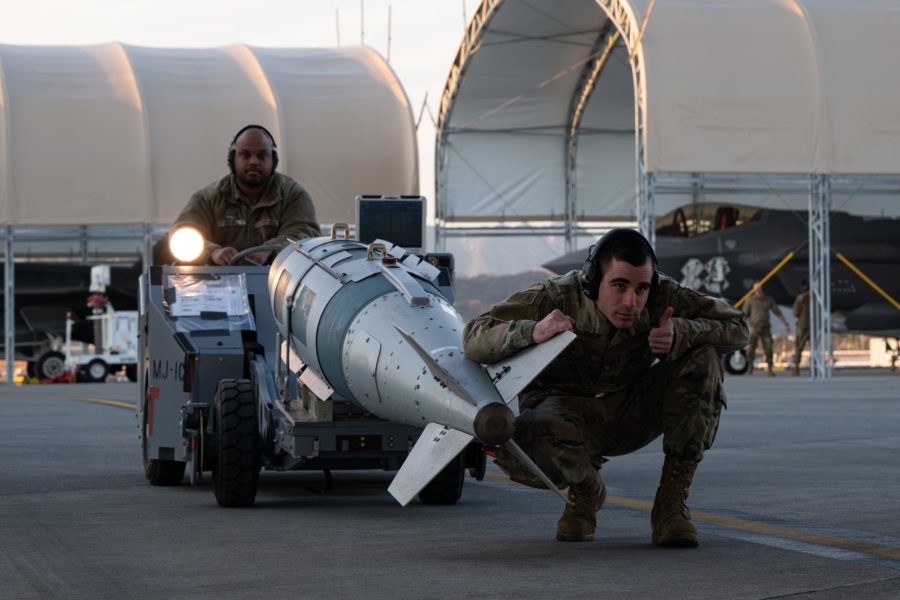Not since the Cold War with the USSR has the United States faced the specter of high-end conflict with a peer competitor. Therefore, it comes as no surprise that our nation’s defense sits at a strategic inflection point based on the advancing military threats presented by China and Russia.
Today, the global strategic environment is categorized by the reemergence of strategic competition—with now two near-peer competitors—who can operate across all domains of warfare and simultaneously employ all aspects of their national power. Like our other military branches, the Air Force faces these emerging challenges while fielding a force only half the size, following force reductions in the decades since the Cold War.
America’s ability to globally defend the nation and its allies is grounded in its ability to project combat power anywhere on the planet. In the past, this meant maintaining a robust global posture; however, fiscal constraints resulting in reduced force structure, coupled with advances in threat capabilities, present an increased vulnerability to U.S. overseas military assets. Furthermore, our adversaries have studied our force deployment and invested heavily in pervasive intelligence, surveillance, and reconnaissance and all-domain long-range offensive capabilities that put our global footprint at risk.
To counter this emerging threat, the Air Force introduced Agile Combat Employment as a method to rapidly deploy across dispersed operating locations within a theater without sacrificing combat capability. When employed, ACE enables Airmen to conduct operations faster and at higher levels of complexity, all from distributed locations. Using ACE concepts, combat assets would continue to move from location to location, exploiting opportunities to attack while keeping key assets out of harm’s way.
The Air Force is already demonstrating an initial ability to bring ACE to the battlespace by focusing on non-material solutions like developing Multi-Capable Airmen. However, to fully mature this concept requires attention to the core elements that enable ACE’s operational framework.
By coupling ready-now solutions with the latest technological innovations, the mission essential capabilities required to implement ACE could be significantly bolstered. The Air Force has an opportunity to reimagine how they generate combat missions from austere locations and design tailorable force packages to enable Airmen to quickly conduct operations from bare base airfields in key theaters.
So, what capabilities could the Air Force include in these agile and connected force packages to enable operating combat missions from dispersed locations? Fortunately, many of the fundamental technologies needed to make ACE real already exist. Through a combination of space-based early warning systems, over-the-horizon radars, passive wide-area surveillance systems, and low-band radars, industry can provide commanders the indications and warning capabilities they need to make decisions and take decisive action at a moment’s notice through communications packages that are mobile, survivable, secure, and sustainable across the electromagnetic spectrum.
We can help ensure commanders get the right information, in real time, by deploying mobile, resilient, and protected communications networks with minimal infrastructure requirements. Providing mobile access to the military’s Advanced Extremely High Frequency satellite communications network will be critical to closing this capability gap, as will the widespread adoption of other advanced communications technologies. Commanders need the ability to task their forces and provide a common operational picture in denied, disconnected, intermittent, or limited bandwidth environments.
In addition, currently existing directed energy systems represent a cost-effective base defense capability that can quickly transition to countering cruise and ballistic missile threats. Other investment areas include the indications and warning capability that is so critical, particularly in the Pacific theater, to immediately provide access to DOD networks in contested environments. Also currently available are autonomous and transportable Ground Controlled Approach (GCA) radar air traffic management systems, remote virtual air traffic control towers, and mobile precision approach and landing systems that can all be included as part of a support “kit” when establishing a dispersal base location.
ACE is the right strategic choice for the Air Force based on the two near-peer threats, but its feasibility hinges on continued material investment and closing known mission capability gaps to truly equip an agile forward deployed Air Force. Industry has clearly heard the call for action from Air Force senior leaders and is ready to bring our innovative capabilities to bear on meeting this 21st century challenge.
Matthew Donovan was Undersecretary of Defense for Personnel and Readiness, Acting Secretary of the Air Force, and Undersecretary of the Air Force during the Trump Administration. Today, he is vice president of requirements and capabilities at Raytheon Intelligence & Space, a unit of Raytheon Technologies that provides terminals that connect to the Pentagon’s AEHF network and the Air Traffic Navigation, Integration, and Coordination System, among other programs and systems.


